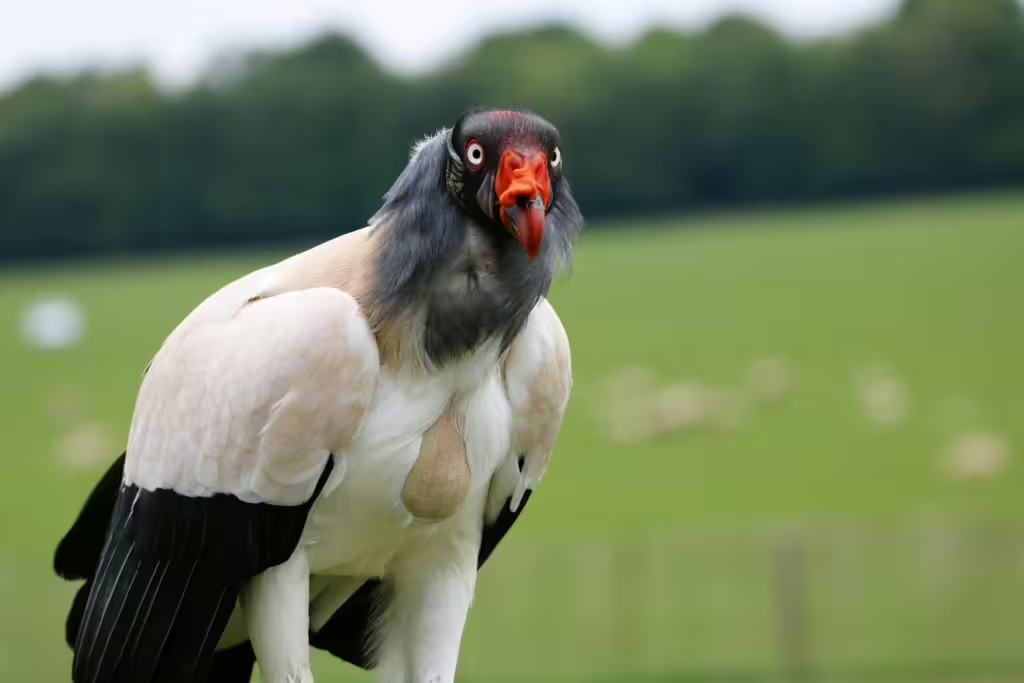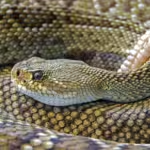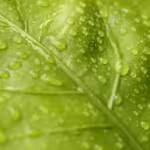In movies, when we see a flock of vultures circling overhead, we can usually infer only one thing; whatever poor creatures is walking below those birds, doesn’t have much time left. We see scavenger bird and we conjure images of death, decay, bleached bones in desert sands; but scavenger birds like vultures aren’t all about the gloom and doom and finality of death, they are about the continuation of life!
Scavengers are the unsung heroes of the natural world, even if most people don’t know it. These birds play a crucial role in maintaining the balance of ecosystems and they do this by cleaning up animal carcasses and organic waste. This, grim but necessary ecological services not only prevents the spread of disease but also contribute to nutrient cycling; which an essential part of the so-called “circle of life.”
Despite their ecological importance, people still hate scavenger birds. This isn’t unusual, many of them tend to be ugly or downright frightening to behold; though there are evolutionary reasons for both. Whatever the reason, many scavenger bird species face significant threats due to their reputation as well as from habitat destruction and other human activities.
In this article, we will explore the ecological role of scavenger birds, as well as the challenges they face. We will highlight six of the most common species of scavenger, some that you may recognize, and some you likely will not. Nevertheless, these birds are all crucial parts of the ecosystem and it’s important that people begin to understand why, before we accidentally kill so many that it matters.
Why Are Scavenger Birds Important?
Scavenger are basically nature’s top-notch clean-up crew and scavenging birds are particularly good at their work. Their purpose in the grand scheme of things is to ensuring that ecosystems remain healthy and functional. Here are some of the key roles that scavenging avians play in the cycle:
Preventing Disease Spread: By consuming the carcasses of dead animals, scavengers prevent the accumulation of decaying matter. Normally, when left to its own decaying devices, this organic matter could harbor pathogens. This reduces the risk of disease outbreaks that could affect wildlife, livestock, and even local humans populations.
Nutrient Recycling: As scavengers break down organic material and digest it, they return essential nutrients to the soil, enriching plant growth and supporting the food chain in ways that aren’t always apparent to those who would judge these birds based on their appearance alone.
Balancing Populations: You might think that by feeding on the remains of dead animals, scavenger birds are just taking out the trash, but they actually help control populations of other scavengers by devouring this dead flash. Insects and rodents breed and feed prodigiously, so without the birds to butt in on their territory in some way, their populations might otherwise grow unchecked.
Cultural Significance: Many cultures have revered scavenger birds for the symbolic significance. Culturally, scavenger birds represent everything from renewal to embodying vigilance and resilience.
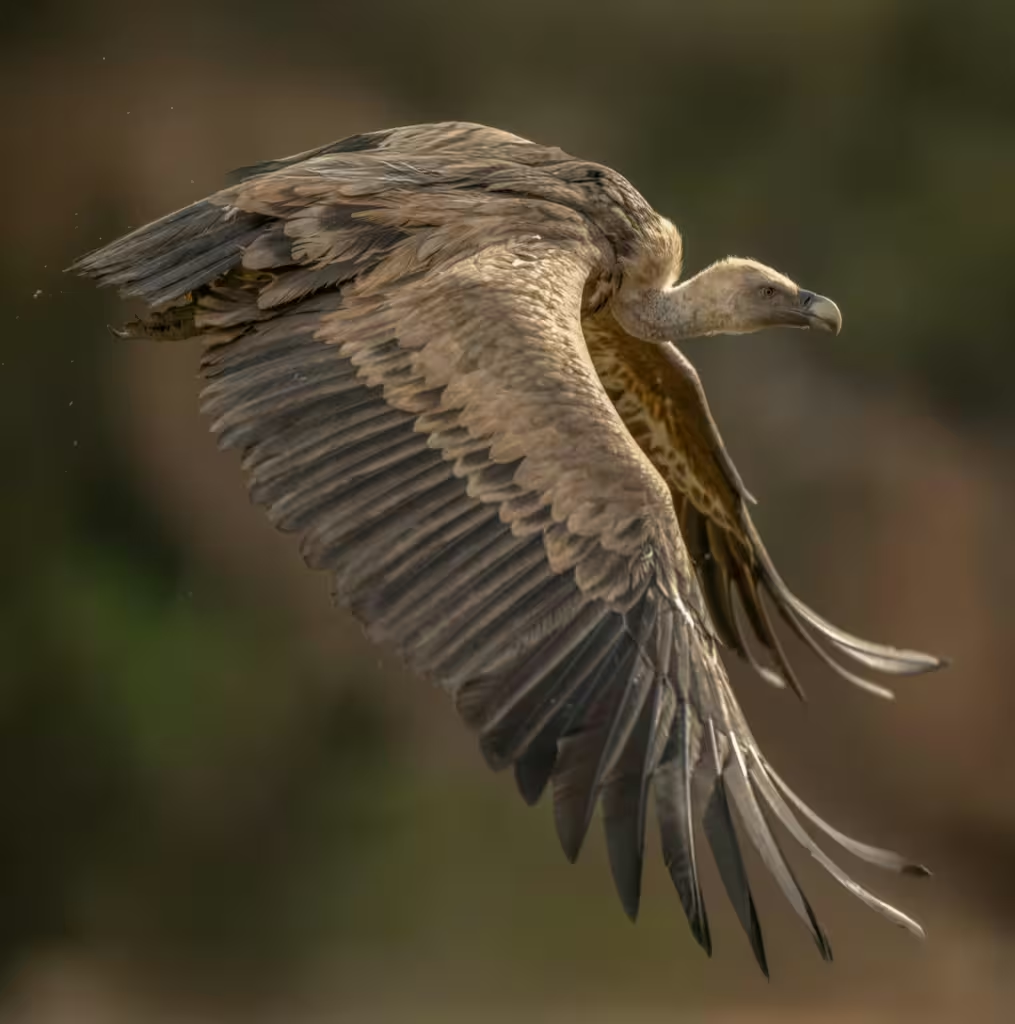
Threats to Scavenger Birds
Despite their vital role within their ecosystems, scavenger birds face numerous challenges, mostly thanks to humans, that threaten their survival:
Habitat Loss: Urbanization, deforestation, and agricultural expansion have been problems for various ecosystems for un told centuries now. Not only have these problems destroyed huge swaths of ecosystems within vital ecosystems like rainforest, deserts, and tundra, they have also greatly reduced the habitats available to scavenger birds. This limits the birds’ access to food and nesting sites.
Poisoning: Despite the fact that their stomachs must be made of steel to be able to eat the types of things they eat, scavenger birds are particularly vulnerable to poisoning. Sure, they can eat decaying flesh and rotten meat, but carcasses laced with toxic chemicals, such as pesticides or lead, have deadly con sequences for these incredible birds.
Electrocution and Collisions: Power lines, wind turbines, and other human-made structures are always problematic for our avian neighbors, and scavenger birds are no different. These contrivances pose significant risks to large scavenger birds, such as condors and eagles, or any other birds that rely on soaring flight.
Climate Change: We all know how bad climate change has been for our animal allies and birds are some of the most profoundly affected. Shifts in weather patterns and the changes in habitat distribution that have been caused by climate change have greatly affected the availability of food and nesting areas for scavenger birds.
Human Perception: As we stated earlier, scavenger birds, particularly vultures and crows, are sometimes misunderstood or maligned, This bad reputation has lead to persecution and reduced conservation efforts on their behalf. These aren’t elephants or whales, we’re talking about here, these are naked-headed birds that dig out the eyeballs of rotting roadkill.
Common Scavenger Bird Species
Below, we have included an overview of sixscavenger bird species that highlight the diversity and importance of these remarkable avians:
Turkey Vulture (Cathartes aura)
Distribution: Found across the Americas, from southern Canada to South America.
Role in Ecosystem: If you live in rural or forested areas in Canada, the continental United States, or even Central and South America, then chances are good you’ve seen a turkey vulture chowing down on some roadkill. Turkey vultures are known for their exceptional sense of smell, which is unique among most scavenger birds. In fact, turkey vultures have the largest olfactory system of any bird, allowing them to scent prey up to a mile away. They can detect the scent of decaying flesh even from up in the air, even when it is hidden under dense vegetation.
Also, the specialized digestive system of the turkey vulture is unique in that it can neutralize harmful pathogens present in rotting carcasses, such as anthrax and rabies, making them invaluable in disease prevention. Turkey vultures, like most birds, fly in groups and will feed as a group as well. Nevertheless, they have been known to feed alone as well. Either way, they are most efficient at cleaning up smaller carcasses and contributing to the natural recycling process.
Threats: Sadly, these birds face threats from habitat destruction and lead poisoning. The former because their forest and grassland homes are constantly being converted to human uses. The second because they often consume carcasses left by hunters that use lead ammunition. Conservation efforts and the use of non-toxic ammunition have been a critical step in ensuring their survival.
Black Vulture (Coragyps atratus)
Distribution: Common throughout the southeastern United States, Central America, and South America.
Role in Ecosystem: Another purely American animal, the black vulture is one of the more social birds among scavenger kind. These birds often work together in groups to locate and consume larger carcasses. Unlike turkey vultures, who have an amazing sense of smell, black vultures tend to rely more on their keen eyesight to find and locate prey animals. Interestingly enough, black vultures play significant role in reducing waste, not only in wild environments, but urban ones as well. These birds are opportunistic feeders, which means they are not picky and will occasionally preying on small animals or raiding garbage dumps when natural carrion food sources are scarce. This adaptability makes them an important part of ecosystems throughout the Western Hemisphere, though it sometimes brings them into conflict with humans.
Threats: Farmers often perceive black vultures as a threat to newborn livestock, which isn’t exactly true; despite their opportunistic nature. Nevertheless, it often leads to intentional persecution on the part of the farmers. At the same time, exposure to toxins in garbage and carrion, along with habitat destruction, continues to pose challenges to the black vulture population across the Americas.
Bald Eagle (Haliaeetus leucocephalus)
Distribution: Native to North America, from Alaska to northern Mexico.
Role in Ecosystem: When you think bald eagle, we’re certain that your first thought it apex predator, not scavenger. The thing is, bald eagles might be iconic birds of prey but are also opportunistic scavengers. In winter time, when live prey is scarce or hard to find, these birds will feed on any bit of protein they can get. Bald eagles will frequently feed on fish carcasses, roadkill, and scraps left by other predators. Their dual role as both hunter and scavenger enhances their ecological importance, making bald eagles keystone species wherever they are found.
By consuming dead animals, bald eagles help to clean up their environments while also reducing competition for resources among other scavengers. in many ways, bald eagles are also a living symbol of ecological recovery, having rebounded from near extinction due to the conservation efforts of the last century.
Threats: Despite this miraculous recovery, bald eagles still face threats from habitat destruction, lead poisoning, and collisions with vehicles or power lines. This is why continued conservation efforts are still necessary to ensure their populations don’t decline to dangerous levels again.
Marabou Stork (Leptoptilos crumenifer)
Distribution: Found across sub-Saharan Africa.
Role in Ecosystem: Many readers won’t imagine that a stork can be a scavenger either, but here we are. In fact, the striking visage of the marabou stork is one that can cause even the bravest naturalist to recoil in fear. This large, bald-headed bird plays a key role in African ecosystems, where it often scavenges alongside vultures. The marabou stork uses its size and powerful bill to access meat within the carcasses that the smaller birds cannot. Marabou storks have even found their way into urban areas in Africa, scavenging at garbage dumps. In this way, the storks still help to reduce waste and control pest populations.
Threats: Habitat destruction and competition with ever-encroaching human neighbors for resources have been major threats to marabou storks for many years now. Additionally, the increase in urbanization and changes in waste management practices have managed to reduce the availability of food, further impacting their survival.
Common Raven (Corvus corax)
Distribution: Found throughout the Northern Hemisphere, from North America to Eurasia.
Role in Ecosystem: Common ravens, like parrots, are among the most intelligent birds. Unlike parrots, whose smarts tends to lie in the ability to speak and comprehend languages, ravens are problems solvers. These birds are more than capable of using tools and solving complex problems, including when it comes to finding food. Their scavenging habits include feeding on roadkill, discarded human food, and animal carcasses in the wild. This is just one of the many reasons that ravens are so highly adaptable. This also means that they are able to thrive in a variety of environments, from remote wilderness areas to bustling cities. The ravens’ role as scavengers helps limit the spread of disease and contributes to the recycling of organic matter in a number of different ecosystems.
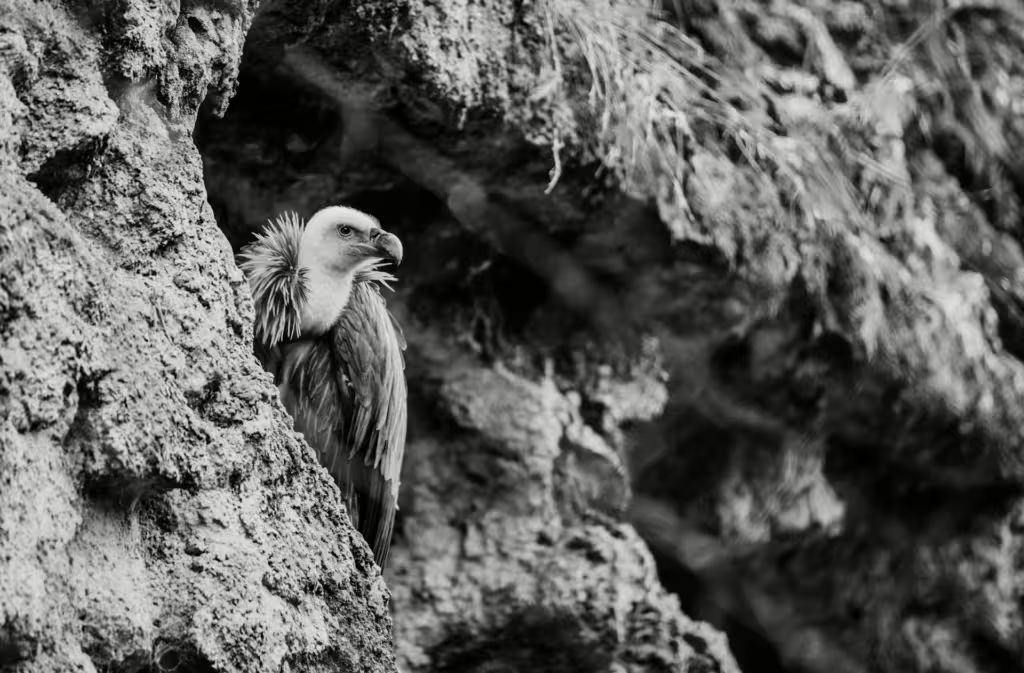
Threats: Ravens thrive pretty much everywhere but they, like most birds, do face some degree of habitat loss in some regions. At the same time, ravens might even be persecuted for their opportunistic feeding habits, which can include preying on small livestock or raiding crops.
California Condor (Gymnogyps californianus)
Distribution: Once widespread across North America, now limited to parts of California, Arizona, and Utah.
Role in Ecosystem: The California Condor is North America’s largest bird and it also happens to be an apex scavenger capable of consuming large carcasses, including those of deer and cattle. The problem is, until very recently, this creature was very nearly extinct in the wild. However, thanks to a rather extreme conservation effort by scientists many years ago, the California condor was brought back from the brink and has continued to play a vital role in preventing the buildup of carrion in the region. Their continued presence also supports biodiversity by providing food for smaller scavengers that feed on the remains they don’t finish.
Threats: Sadly, lead poisoning from ammunition, habitat destruction, and low reproductive rates continue to make life difficult for the majestic California condor. It is still one of the most endangered birds in the world and despite intensive conservation programs, including captive breeding and reintroduction, the population is still in danger, though is technically stable at the moment.
How to Protect Scavenger Birds
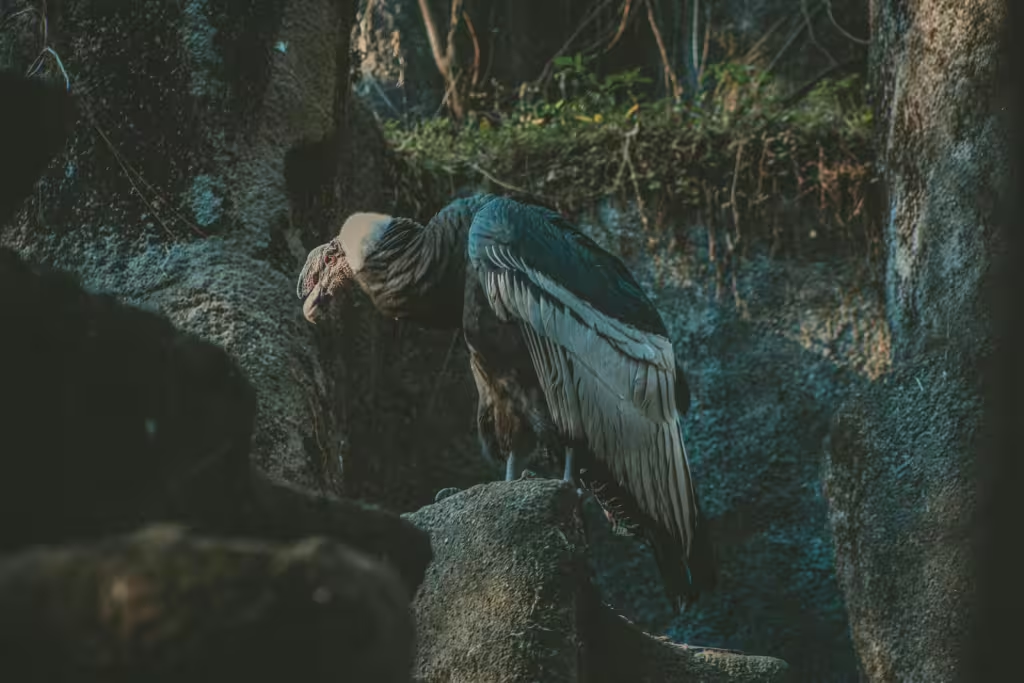
Protecting scavenger birds is a difficult task that requires a multifaceted approach. The trick will be addressing the various threats that these birds face:
Conservation Initiatives: These initiatives support programs that protect scavenger bird habitats and establish safe feeding and breeding sites.
Legislation: Laws are harder to change but people can advocate for laws that ban harmful substances like lead ammunition, as well as laws that enforce penalties for illegal poisoning.
Public Awareness: As with any conservation effort, we must educate communities about the ecological importance of scavenger birds to reduce the negative perceptions associated with them. This will hopefully prevent unwarranted persecution.
Research and Monitoring: As we did with the California condor, scientists must be free to conduct studies to understand population trends and threats, enabling targeted conservation efforts, including rehabilitation and release programs that help fix injured or poisoned scavenger birds.
True Investigator Says…
As you can see, scavenger birds might seem ugly or scary, but they are absolutely indispensable to the health and balance of ecosystems all over the world; including many that we are actually a part of! From vultures soaring over savannas to ravens scavenging in urban jungles, these birds are ensuring that nature’s recycling system operates as efficiently as possible. It is up to us to keep it that way, by helping these birds where we can and ensuring that they continue to pick up our decomposing remnants for centuries to come.
Discover more from TrueInvestigator
Subscribe to get the latest posts sent to your email.
